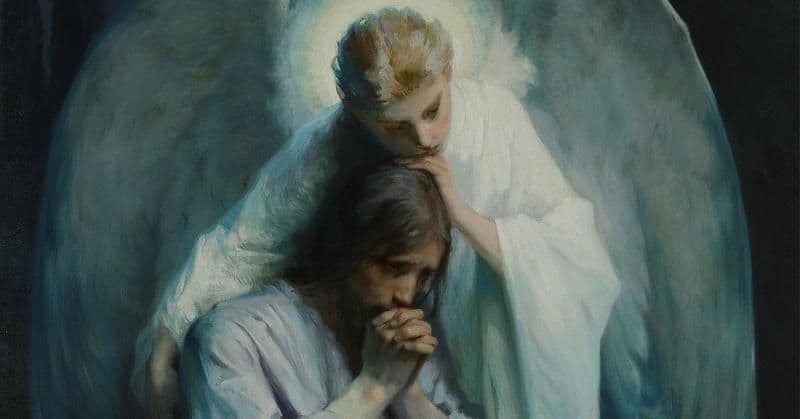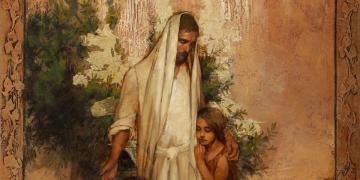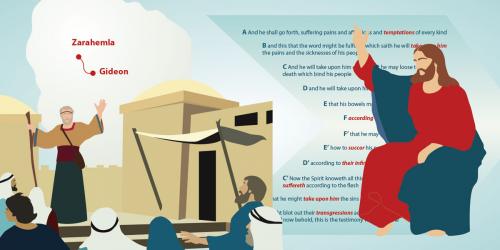November 5, 2019
Jesus Sanctifies and Redeems His Own
Post contributed by
Matt Roper

The writer of Hebrews taught how Jesus Christ, the Son of God, by whom the Father created the worlds, and spoke to the ancient prophets, became subject to mortality in order to redeem, sanctify, and glorify those who will receive Him. He suffered, died, and was “crowned with glory and honor” in order to bring “many sons unto glory” (Hebrews 2:10). He was willing to do this because we all share a common bond, “For he that sanctifieth and they who are sanctified are all of one [ex henos literally “from one”]; for which cause he is not ashamed to call them brethren” (Hebrews 2:11). As children of one Heavenly Father we are family. As sisters and brothers, He knows who we are and loves us. For that reason, He was willing to do all that we could not do for ourselves.
He is the great captain of our salvation who will lead us to the same glory that He received if we will allow Him to sanctify us and show us the way. He is not a stranger to our own temptations and sufferings. As the one who carried these Himself, He is “touched with the feeling of our infirmities” for He “was in all points tempted like as we are, yet without sin” (Hebrews 4:15). In our trials and times of need, we can go boldly before Him in prayer “that we may obtain mercy, and find grace to help in time of need” (Hebrews 4:16).
The prophet Abinadi taught, “God himself should come down among the children of men, and take upon him the form of man, and go forth in mighty power upon the face of the earth” (Mosiah 13:34). Jesus, the Son of God would be “oppressed and afflicted” (Mosiah 13:35), suffer many temptations, be “mocked, and scourged, and cast out and disowned by his people” (Mosiah 15:5) “crucified” and “slain” (Mosiah 15:5–7), and then bring to pass the resurrection of the dead (Mosiah 13:35). Having fulfilled the will of our Heavenly Father in bearing our sufferings and sins, He would have power to intercede with mercy on our behalf (Mosiah 15:8–9).
Alma taught, “he will take upon him their infirmities, that his bowels may be filled with mercy, according to the flesh, that he may know according to the flesh how to succor his people according to their infirmities” (Alma 7:12). As our Redeemer He knows how to heal us from the wounds that sin and worldly influences can inflict upon us (3 Nephi 9:13–14). If we will return to Him, He stands with “open arms” to receive us (Mormon 6:17).
Elder Boyd K. Packer taught how complete that healing can be.
Our physical bodies, when harmed, are able to repair themselves, sometimes with the help of a physician. If the damage is extensive, however, often a scar will remain as a reminder of the injury.
With our spiritual bodies it is another matter. Our spirits are damaged when we make mistakes and commit sins. But unlike the case of our mortal bodies, when the repentance process is complete, no scars remain because of the Atonement of Jesus Christ. The promise is: “Behold, he who has repented of his sins, the same is forgiven, and I, the Lord, remember them no more” (D&C 58:42)....
The Atonement, which can reclaim each one of us, bears no scars. That means that no matter what we have done or where we have been or how something happened, if we truly repent, He has promised that He would atone. And when He atoned, that settled that. There are so many of us who are thrashing around, as it were, with feelings of guilt, not knowing quite how to escape. You escape by accepting the Atonement of Christ, and all that was heartache can turn to beauty and love and eternity.1
The love of our Father in Heaven and His Son Jesus Christ for each of us is immeasurable.
Related Articles
- 1. Boyd K. Packer, “The Plan of Happiness,” Ensign, May, 2015, online at churchofjesuschrist.org.

